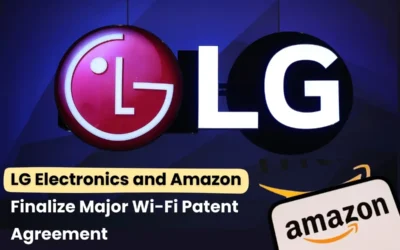
In the ever-evolving landscape of intellectual property (IP) finance, patent securitization is emerging as a groundbreaking strategy. This innovative approach allows patent holders to convert their patents into liquid financial assets, providing a new pathway for businesses to unlock value from their intellectual property portfolios. As the market for IP-backed financial products grows, patent securitization is becoming a key tool for companies seeking to optimize their patent assets and secure financing.
What is Patent Securitization?
Patent securitization is the process of pooling patents and using them as collateral to issue asset-backed securities (ABS). These securities are sold to investors, who receive returns based on the future income generated by the patents, such as licensing fees or royalties. This method transforms otherwise illiquid patent assets into tradable financial instruments.
The Mechanism of Patent Securitization
- Patent Portfolio Assessment: A thorough evaluation of the patent portfolio is conducted to determine the potential revenue streams from licensing, royalties, or patent infringement settlements. This involves patent valuation experts assessing the commercial viability, market demand, and enforceability of the patents.
- Special Purpose Vehicle (SPV) Creation: A separate legal entity is established to hold the patents and issue securities. The SPV operates independently from the patent owner, ensuring that the underlying patent assets are protected from potential financial instability of the parent company.
- Issuance of Securities: The SPV issues asset-backed securities (ABS) to investors, backed by the future cash flows from the patent portfolio. These securities can be traded in financial markets, offering investors a unique asset class with potential for high returns.
- Distribution of Returns: Investors receive periodic payments based on the revenue generated by the patents. These payments may come from licensing agreements, royalty payments, or settlements from patent infringement cases.
Key Benefits of Patent Securitization
- Liquidity: Converts illiquid patent assets into cash, providing immediate capital to patent holders. This can be especially beneficial for startups and small businesses that require funding to scale operations.
- Risk Diversification: Spreads risk across multiple patents and investors, reducing the impact of any single patent’s underperformance. Investors gain exposure to a diversified patent portfolio, minimizing the risk associated with individual patents.
- Capital Access: Enables businesses, especially startups, to secure funding without diluting equity. Patent holders can raise funds while retaining ownership and control over their company.
- Enhanced Valuation: Provides a transparent market valuation of patent portfolios, which can be beneficial for mergers, acquisitions, and other financial transactions. Accurate patent valuation can also strengthen a company’s balance sheet.
Impact on IP Finance
Patent securitization is transforming IP finance in several ways:
- Market Growth: The increasing recognition of patents as financial assets is driving the development of specialized markets for IP-backed securities. Financial institutions and investors are creating innovative financial products tied to patent assets.
- Investor Participation: Institutional investors, hedge funds, and pension funds are showing growing interest in IP-backed investments, viewing them as alternative assets with attractive returns. This influx of institutional capital is fostering the development of the patent finance sector.
- Innovation Funding: Patent securitization is enabling innovators and technology companies to fund research and development (R&D) by leveraging their patent portfolios. Companies can reinvest the proceeds from securitization into new product development and innovation.
- Reduced Litigation Dependency: Companies can monetize their patents without resorting to costly and uncertain patent litigation processes. This shift reduces legal expenses and allows businesses to focus on innovation and commercialization.
Real Life Examples
- Intellectual Ventures: One of the pioneers in patent monetization, Intellectual Ventures has utilized patent securitization to finance acquisitions and generate returns for investors. The company pools patents from various sources and issues securities backed by licensing revenues.
- Royalty Pharma: A leading player in the pharmaceutical sector, Royalty Pharma securitizes drug royalties, demonstrating the applicability of securitization beyond technology patents. The company invests in royalties from blockbuster drugs and packages them into tradable securities.
Challenges and Risks
While patent securitization offers significant advantages, it is not without challenges:
- Valuation Complexity: Assessing the future income potential of patents is inherently uncertain and requires specialized expertise. Inaccurate valuation can lead to mispricing of securities and investor losses.
- Legal Uncertainty: Patent validity and enforceability can be contested, affecting the revenue streams backing the securities. Legal disputes can delay payments to investors and reduce the overall value of the securitized assets.
- Market Development: The market for IP-backed securities is still developing, with limited standardization and regulatory frameworks. A lack of liquidity and secondary markets can pose challenges for investors seeking to exit their positions.
Read Also: The Critical Role and importance of Patents in Business Strategy 2025
Future Outlook
The future of patent securitization appears promising as the global economy becomes increasingly knowledge-based. Advances in patent analytics and valuation methodologies are expected to enhance the reliability of patent-backed securities. Additionally, growing investor awareness and regulatory support are likely to drive further market expansion. Governments and financial institutions are likely to play a key role in fostering the growth of this innovative financing model.
Conclusion
Patent securitization is revolutionizing IP finance by transforming patents into liquid financial assets. This innovative approach is providing businesses with new avenues to unlock the value of their intellectual property, secure funding, and drive innovation. As the market for IP-backed securities continues to evolve, patent securitization is set to play an increasingly vital role in the global financial ecosystem.









